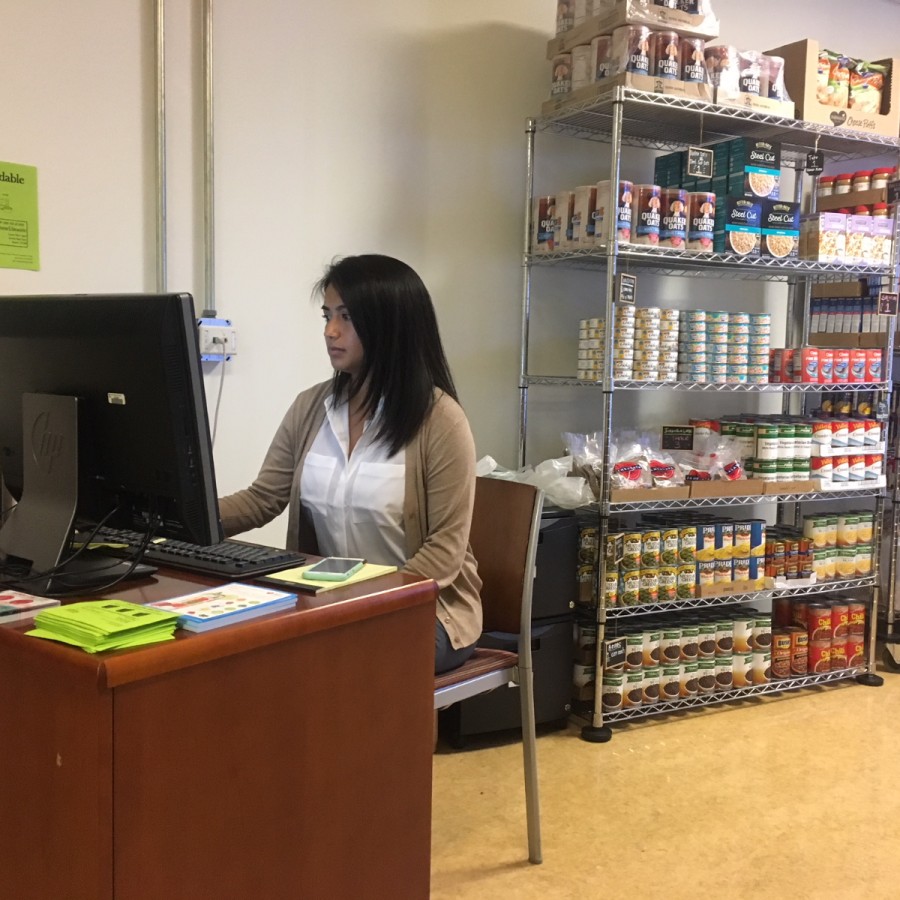Survey: Two-Thirds Of City Colleges Students Face Housing Or Hunger Challenges
By Kate McGee

Survey: Two-Thirds Of City Colleges Students Face Housing Or Hunger Challenges
By Kate McGeeUpdated 3:00 pm
A survey of 3,000 City Colleges of Chicago students shows that about two-thirds are struggling to feed or house themselves while also working towards a degree.
And many students facing these challenges aren’t tapped into as many public assistance programs as they could to help address the issue.
About one in three students who self-identified as food insecure receive SNAP benefits, or food stamps. Just 9% of students who experienced homelessness utilized housing assistance.
“This is a call to action for us,” City Colleges Chancellor Juan Salgado said to a crowd of community partners and college employees at Truman College Thursday morning. “ We’ve been working together but we got to work together more. And we’ve got to work together better. We’ve got to optimize the resources available in this city and ensure they’re coming to our students.”
Food insecurity is defined as having limited or uncertain access to nutritious food. Housing insecurity is broadly defined as having trouble finding consistent housing or struggling to consistently pay rent. Homelessness is defined as not having a stable place to live.
The survey, released Thursday, was conducted by The Hope Center at Temple University in Philadelphia, which has administered similar surveys across the country and have been vocal about the challenges low-income students face while in school. They sent the survey to more than 45,000 City Colleges students via email in fall 2018. Ultimately, 6% responded.
| Food and housing insecurity among City Colleges of Chicago students | ||||
|---|---|---|---|---|
| Food insecure, housing insecure or homeless | 64% | |||
| Food and housing insecure | 34% | |||
| Housing insecure and homeless | 12% | |||
| Food insecure and homeless | 11% | |||
| No needs | 36% |
Source: The Hope Center
While this is a small sample of City Colleges population — and it’s unclear based on the results how much of the broader City Colleges population this represents — it is the first time this kind of data has been collected about City Colleges students.
According to The Hope Center, 44% of students who responded to the survey were food insecure within 30 days of taking the survey. More than half worried about running out of food. More than a third said they skipped meals to save money. Some 12% said they did not eat for a whole day because they could not afford the food.
Meanwhile, those experiencing housing insecurity struggled with paying increased rent or were unable to pay their full rent or utilities. Nearly a quarter of respondents had an account default or go into collections because they couldn’t pay, such as a gas or credit card bill. Another 20% moved in with others as a result of their financial struggles. Researchers at The Hope Center say that gap between black and Latinx students is slightly larger at City Colleges than around the country.
Among the people responding to the survey, 15% experienced homelessness. Another 11% said they couch surfed, while smaller percentages stayed outdoors, temporarily at a motel, at a treatment center or shelter.
The survey found students who faced additional adversity, such as living in the foster care system, serving in the military, or had a disability or medical condition were more likely to experience food or housing insecurity. Transgender students had higher rates of homelessness than heterosexual classmates.
| Race | No. surveyed | % food insecure | % housing insecure | % homeless |
|---|---|---|---|---|
| White | 483 | 35% | 53% | 16% |
| Black | 708 | 55% | 64% | 21% |
| Hispanic | 1,141 | 40% | 48% | 10% |
Source: The Hope Center
Meanwhile, the rate of African American student respondents who were food insecure was 20 percentage points higher than for white students and 15 percentage points higher than Latinx students.
The survey also found students who have jobs still face these struggles. Sixty-eight percent of students who experience food insecurity are employed while 71% of students facing housing insecurity and 67% of students experiencing homelessness are employed.
Over the past year, City Colleges has tried to address food insecurity by opening food pantries at all seven colleges. They also created an emergency fund for students that students can access to help with unexpected financial struggles, made possible by an anonymous donor. It provides students with up to $750 per semester. City Colleges also is adding a new housing coordinator to help connect students to housing resources.
The community college system says it already provides a host of other supports to students, including a Wellness Center, Disability Access Centers and various scholarships.
This report comes after The Hope Center released a first-ever national survey on college campus food pantries last fall. The survey found that campus food pantries have rapidly increased since 2012, but awareness of the pantries is sometimes limited because outreach strategies can be informal.
Researcher Sara Goldrick-Rab at Temple University told WBEZ that pantries alone won’t solve food insecurity issues.
“What they’re good at is instigating the broader conversation on campus,” Goldrick-Rab said. “So, I don’t think it should be viewed as a solution, but I do think it’s probably part of the process toward one.”
When it comes to public assistance programs, Christy Baker-Smith with The Hope Center said schools need to make sure students are aware they might qualify. Often, she said, students don’t know the benefits exist or the steps to receive them become a barrier themselves.
“For housing assistance,” she said, “you need things like your birth certificate, which you might not have because you left your house in a hurry because it was an unsafe environment.”
Kate McGee covers education for WBEZ. Follow her on Twitter at @WBEZeducation and @McGeeReports.